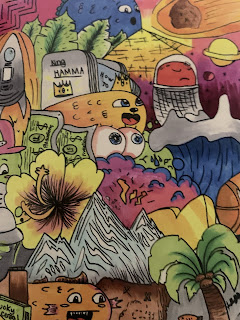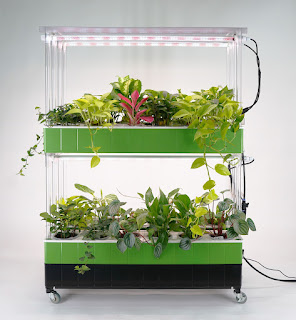What a treat to receive these books from Matt Tom, a middle school teacher whom I met a few years ago at a Hawaii Educators W-RITE event. I connected with him on Twitter and listened to a podcast he had with Josh Reppun. I realized what an outstanding educator Matt is and how much he has invested in making his classroom a place of learning for his students. As he tells them, he doesn't want to waste their time. (Take a listen; it's well worth your time.) After listening to Matt sharing about how proud he was of a book project titled Tusitala, I asked him how I could get a copy. He sent me all three volumes, one for each year from 2018-2021 (I don't know for sure, but the 2020 volume was probably cancelled due to COVID.).
To say that I am amazed is an understatement. The books are compilations of student writings and artwork. There are poems, fictional stories, personal essays, and stories written in the students’ native language. I especially love the essays titled, "Where I'm From." They are so heartfelt, honest, and brave. The artwork is varied and includes paintings, portraits, drawings, landscapes, photography, etc. Each is different, and I am so impressed by the various art forms and the details that made each one so unique.
What I loved most is that students had a deadline to submit their writings and/or artwork. Student editors along with Mr. Tom selected what would be included, and these were then put together into books that will forever document those students’ work. I am sure this was a learning experience for everyone involved, even those whose submissions were not selected.
Mr. Tom gave all students an opportunity to shine, to demonstrate that they are very capable of producing high quality work, and the three volumes of Tusitala are evidence of their motivation and pride as writers and artists.
I have shared my belief that grades and test scores do not define a student. I believe that when students have opportunities to do authentic and meaningful work like those that are included in Tusitala, they should be saving it as part of a portfolio to show their growth, their learning, and their reflections. With the availability of technology, students can create an electronic portfolio such as a blog, or a webpage, and include photos, videos, and text, or they could use a tool like unrulr to share and reflect on their work.
Today, athletes put together a video of highlights of their career and send it out to coaches in hopes of earning a scholarship to play in college. Likewise, students could use their electronic portfolio as part of their college or job applications to inform others about actual work the student has produced and how they have learned and grown from the process. I believe it shows what a student is capable of and can be more effective than a resume.
As Mr. Tom seeks pieces of writing and artwork for the next publication, he reminds students to Share your story. It's one worth telling.
Note: "Tusitala" means "teller of tales" in Samoan. It is the name that Robert Louis Stevenson gave himself when he settled on one of the Samoan islands. (Click here for information about RLS in Hawaii)











